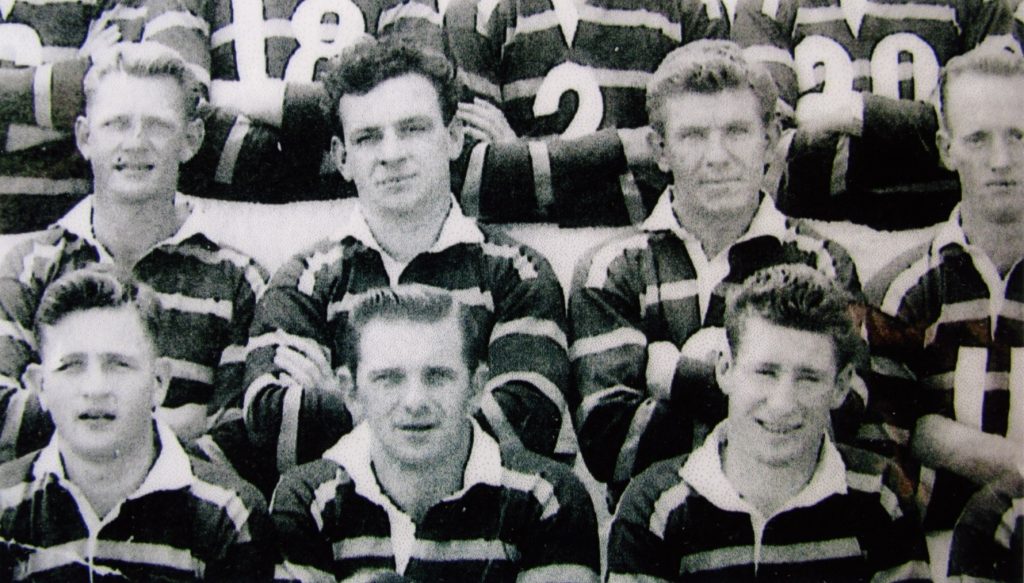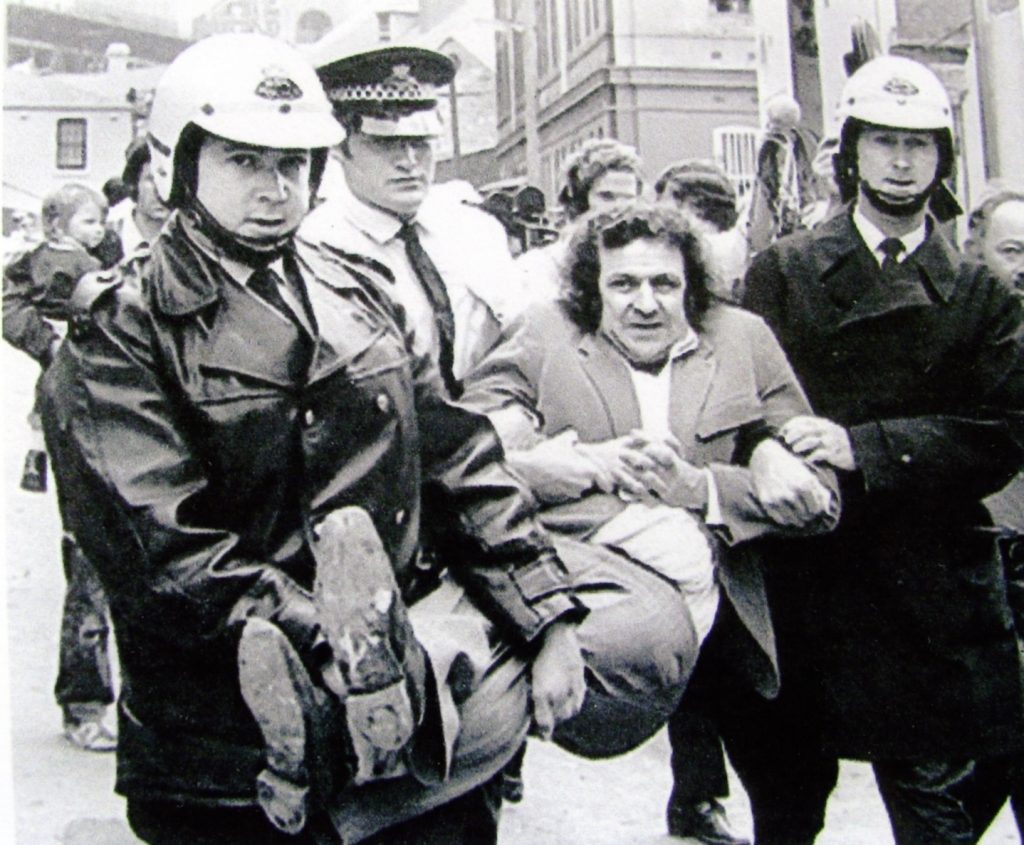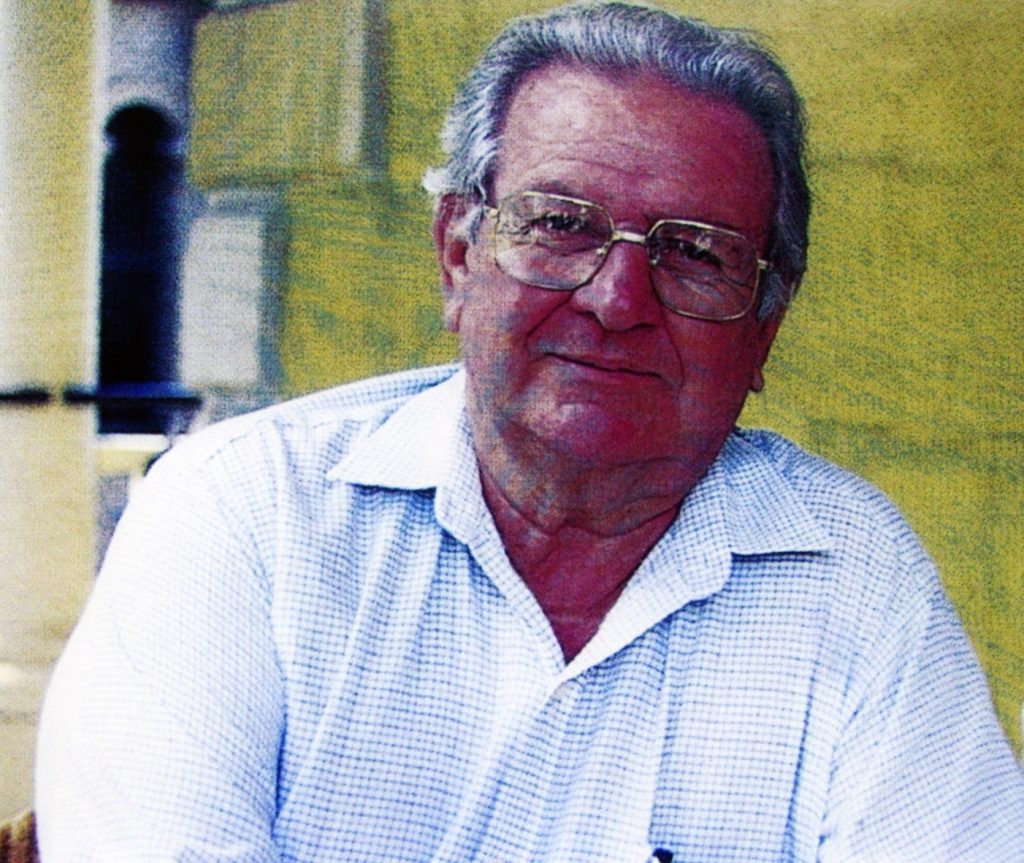by Clarrie Neal
Jack Mundey was born in 1929 on a dairy farm at Malanda, on the Atherton Tablelands, 100 kms west of Cairns. He was one of five children in the family, and his mother died when he was six years old. He was brought up by his eldest sister Josie and recalls helping the family work the dairy farm as a very trying time. He initially attended Malanda Public school and was then enrolled at St. Augustine’s, a boarding school in Cairns. He found the everyday discipline at this school hard to handle and eventually ran away, aged 13 years.
Showing some promise as a Rugby League player he came to Parramatta in 1950 to be coached by Vic Hey. In 1955, after realising he was not going to make it as a first grade player in the NRL he accepted the position as Captain /Coach of the Riverstone ‘A’ grade team in the district competition.
He led this team to a spectacular win in the grand final against Richmond, Riverstone were down 11 nil at half time and midway through second half were down 14 nil. They then scored five tries and two goals in the final 20 minutes to win the final 19 points to 14.

Back row- 1. Len Belshaw, 2. Jack Mundey, 3. Freddy Brown, 4. Bill Wood.
Front row- 1.Johnny Waters, 2. Billy Erskine, 3. Dessie Cartwright.
At the time Jack became a metal worker and joined the Ironworkers Union, then became a builders labourer and joined the Builders Labourers Federation. Jack was alarmed at number of deaths on these building sites, recalling in one year there was over 100 reported deaths.
In 1957 he joined the Communist Party, and in 1968 he was elected as Secretary of the NSW Builders Labourers Federation. It was in this role that he introduced the Green Bans that were about to bring a change in the attitude and thinking of the middle class communities of Sydney.
With the assistance of the local communities he led the fight to save The Rocks area of Sydney from being demolished to make way for high rise hotels. He prevented Centennial Park from being converted into a massive Sports Stadium and car park. He believed the loss of these areas of open space was detrimental to our way of life and had to be stopped.
One of the more famous protests was when the BLF formed an alliance with the middle class ladies of Hunters Hill to save an area known as ‘Kelly’s Bush’. He then had a Green Ban placed on the destruction of the huge fig trees in the Botanical Gardens. Jack recalled the editor of the Sydney Morning Herald advising him the Herald had received more letters of support for this ban than on any other issue.
Jack continued to help these groups and their Green bans, and became very involved with the environmental movement. Sometimes these protests led to him being gaoled, as was the case with The Rocks protests in 1973.

At the time Premier Askin branded the Green Bans as Industrial anarchy and ordered the police to arrest the protesters. Jack believes this action eventually led to the demise of the Askin government.
Corruption was rife in this era; Juanita Nielsen, the editor of a local paper and a strong supporter of the protesters, disappeared; her body was never found.
Jack recalls one of the arresting constables at the time was Steven Lane, who later became a staunch supporter of the environmental movement. Steven in later years instigated the move to have a part of The Rocks area recognised as ‘Jack Mundey Place’.
There was a Federal take over of the New South Wales branch of the Builders Labourers Federation in 1975 and Jack lost his position as their branch Secretary.
He never returned to the Union movement, being content to work with the Australian Conservation Foundation and other environmental organisations. In 1988 he became an Honorary Doctor of Letters and Science at the University of Western Sydney.
In the 1990’s Jack was made a Life Member of the Australian Conservation Foundation. In 1995 he was appointed as the Chairman of the Historic Houses Trust of New South Wales, and it was in this role that he attended the handing over of Rouse Hill House to the Trust in 1999.

Jack has endured more than his share of personal tragedies in his life. His mother died when he was six year old and he was cared for by his elder sister. His first wife died aged 22 with a cerebral haemorrhage and Jack was left to care for his young son, Michael. Five years later (1965) Jack married Judy, his present wife.
In 1982, his only son Michael, then aged 22, was killed in a car accident.
Today (2012) Jack is at the forefront of the battle to save the historical Thompson Square, Windsor, from destruction by developers and road builders.
Jack can be be proud of his achievements over the years, rising from a boy who ran away when he was 13 years old, overcoming many setbacks to become the Chairman of the prestigious Historic Houses Trust of New South Wales.
Jack was rewarded with the Order of Australia Medal in the 1990’s and later was awarded the AO.
